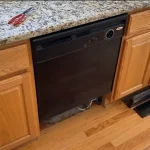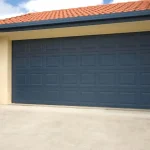Replacing stair treads built into stringers is a critical home improvement project that enhances both the safety and aesthetic appeal of your staircase. Over time, stair treads can wear down due to heavy foot traffic, exposure to moisture, or simply the passage of time, leading to potential hazards such as slips and falls. Understanding the anatomy of your stairs and the proper methods for replacing treads can make this task manageable, even for DIY enthusiasts.
This guide provides a comprehensive overview of the replacement process, detailing the tools and materials needed, safety precautions, common pitfalls to avoid, and expert tips for ensuring a successful outcome.
Whether you’re looking to refresh an outdated staircase or repair damaged treads, this article will equip you with the knowledge required for a safe and effective remodel.
The Anatomy of Stairs
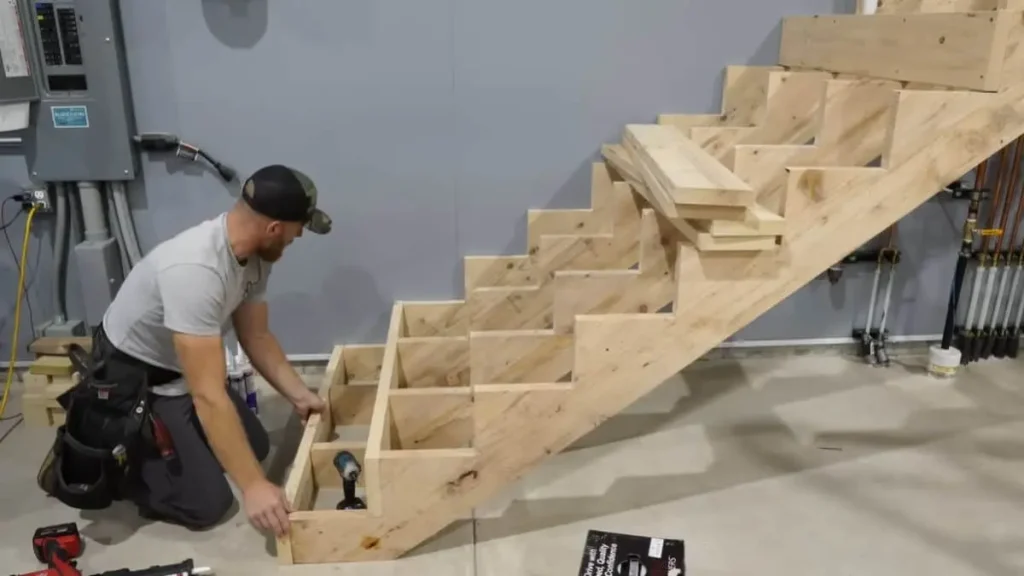
What are stair treads and stringers?
Stair treads are the horizontal surfaces of each step, providing the area where you step as you walk up or down the staircase. Stringers, on the other hand, are the sloped, structural components that run along both sides of the staircase. They act as the backbone, supporting both the treads and risers.
In some cases, the treads are set into the stringers, meaning they are fitted directly into slots cut within the stringer for added stability and a cleaner look.
How do built-in stair treads differ from surface-mounted treads?
The key difference lies in the way they are attached. In traditional surface-mounted stairs, treads are fastened on top of the stringers using screws or nails. However, with built-in treads, the stringers are cut with precise slots or dadoes where the treads fit snugly. This design offers greater structural integrity but makes replacement more challenging, as the treads are essentially locked into the stringers.
What are risers and how do they fit into the design?
Risers are the vertical elements between each tread. They form the front face of the step, covering the gap between treads. Not all stairs have risers, but in staircases where they exist, they help enhance the stability and appearance of the staircase. Both risers and treads are supported by the stringers, making the stringers crucial for the overall strength and durability of the staircase.
Tools and Materials Needed
What tools are required for replacing stair treads?
To successfully replace stair treads built into the stringer, you will need a combination of cutting, measuring, and fastening tools. A circular saw is essential for cutting the new treads to the correct size, while a pry bar will help you carefully remove the existing treads without damaging the stringers. Other key tools include a hammer, which is useful for dislodging nails, and a tape measure to ensure precise measurements of both the treads and stringers.
For more precise adjustments, a chisel can be used to clean out the slots in the stringers after the old treads are removed. To ensure the new treads sit flush, you’ll need clamps to hold them in place while securing them with screws or nails. A power drill will allow you to make clean holes for fasteners and ensure the new treads are properly anchored.
What materials are necessary for stair tread replacement?
The most important material you’ll need is the new stair treads themselves. These treads should match the existing material in terms of both thickness and width. For most homeowners, hardwoods like oak or maple are recommended for their durability and aesthetic appeal. Additionally, you’ll need wood glue to secure the treads within the stringer slots and ensure a solid bond.
Once the new treads are installed, wood filler or caulk will help fill any small gaps between the treads and stringers, creating a seamless finish. If you’re refinishing the treads after installation, wood stain or paint may be applied to match the overall look of your staircase. Lastly, to protect the wood and prolong the lifespan of the treads, a wood sealant should be used to shield them from wear and moisture.
Safety Tips for Replacing Stair Treads
What safety precautions should you take when working with stair treads and stringers?
Replacing stair treads built into stringers involves handling power tools, sharp objects, and heavy materials, making safety precautions essential. Before starting, it’s important to assess the condition of the entire staircase. Check that the stringers are stable and that the stairway is not structurally compromised. If the stringers show signs of damage or weakness, repairs may be necessary before replacing the treads to ensure the stairs remain safe.
What protective gear should you wear?
While working on stair treads, personal protective equipment (PPE) is crucial. Wearing safety glasses will protect your eyes from sawdust, wood splinters, or debris that can be dislodged during the removal or cutting process. Gloves will help shield your hands from sharp tools and rough materials, while a dust mask prevents inhaling sawdust, especially if you’re working in an enclosed space like a staircase in a basement or interior hallway.
How do you maintain stability and support during the replacement process?
Ensuring that the stairs remain structurally sound throughout the process is critical. When you remove the old treads, the stringers may be temporarily weakened, especially if they rely heavily on the treads for lateral support. One way to keep the staircase stable during this time is by working on one tread at a time, rather than removing all of them at once. This keeps most of the stairway intact, allowing you to move up and down safely. For added support, temporary braces can be used to reinforce the stringers while the treads are being replaced.
What if electrical wiring or HVAC ducts run near the stairs?
In some homes, stairways may run near walls that contain electrical wiring or HVAC ducts. Before starting the replacement, it’s essential to know the location of these elements to avoid damaging them during the project. Cutting into a stringer or drilling in areas near wiring or pipes could lead to dangerous situations like electric shocks or gas leaks. To prevent accidents, carefully plan the replacement process and consider using a stud finder or similar tool to detect any hidden infrastructure near your work area.
How should power tools be handled safely?
Working with power tools like a circular saw or power drill demands care and precision. Always ensure that the blades and drill bits are sharp and properly secured to avoid accidents. Dull blades can cause the tools to slip or bind, increasing the risk of injury. When using a circular saw to cut new treads, secure the wood in place with clamps to prevent it from moving unexpectedly during the cut.
Follow manufacturer instructions for tool use, and always disconnect power tools from their power source when changing blades or bits to reduce the risk of accidental activation.
How can you safely manage a high-traffic stairway during the project?
If the stairway you’re working on is a primary route in your home, managing its accessibility during the project is vital. Blocking off the staircase with warning signs or barriers can prevent family members or visitors from accidentally using it while it’s under construction. If possible, plan to complete the project in phases or during low-traffic times, such as when the household is out or sleeping, to minimize disruption and risk.
Step-by-Step Process for Replacing Stair Treads Built into Stringer
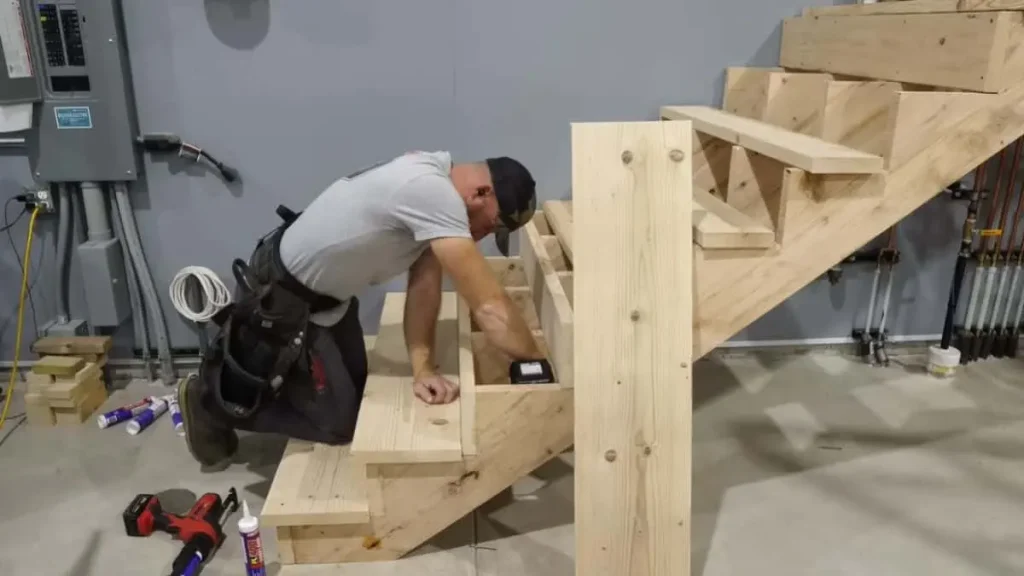
How should you assess the damage and plan the replacement?
Before beginning any physical work, it’s essential to evaluate the condition of the current stair treads and stringers. Start by inspecting the stair treads for signs of wear, cracks, or looseness, which may indicate the need for replacement. At the same time, examine the stringers to ensure they are structurally sound and free from rot or warping.
If the stringers are compromised, repairing or reinforcing them should be part of the project plan. Measure the existing treads carefully, noting their width, depth, and thickness, as the new treads must fit perfectly into the existing slots in the stringers. Additionally, consider the overall design and finish of the stairs to ensure that the new treads match aesthetically with the rest of the staircase.
How do you remove the existing stair treads?
Removing the old treads can be a delicate process, especially when they are built into the stringers. Begin by locating any nails, screws, or glue securing the treads to the stringers. Using a pry bar or hammer, carefully lift the tread from the stringer. It’s important to work slowly and methodically to avoid damaging the stringer or surrounding structure.
You may need to use a chisel to break the bond between the tread and the stringer for particularly stubborn treads. If glue has been used, a heat gun or similar tool can soften the adhesive, making removal easier. Once the tread is loose, remove any remaining nails or fasteners to prepare for the installation of the new tread.
What should you do to clean and prep the stringer for new treads?
After removing the old treads, the stringer may have leftover debris, glue, or fasteners that need to be cleared out before installing the new treads. Using a chisel or a scraper, clean out any residue or old adhesive from the slots where the treads were previously fitted. Ensure that the surfaces are smooth, and there are no obstructions that could prevent the new treads from sitting flush within the stringers. This is also the time to check that the stringers are level and properly aligned. If any adjustments are needed, such as shimming or reinforcing the stringer, make these repairs before proceeding. A clean and even surface ensures a better fit and stronger bond for the new treads.
How do you cut and prepare the new stair treads?
Once the old treads are removed and the stringers are prepped, it’s time to cut the new treads to size. Use the measurements taken earlier to ensure accuracy, and remember that precise cuts are crucial for a proper fit within the stringer slots. To achieve a snug fit, it’s better to cut slightly larger and sand down the edges for precision. When cutting the treads, use a circular saw to make clean, straight cuts.
After cutting, sand the edges to smooth any rough surfaces or splinters, which will help the treads fit tightly within the stringer slots. Applying wood glue to the edges before installation can improve the overall bond between the tread and the stringer.
How do you install the new stair treads?
Installing the new stair treads requires precision and patience. Begin by applying a small amount of wood glue along the edges of the tread that will sit within the stringer slots. Carefully position the new tread into place, ensuring it fits securely within the stringer grooves. Once positioned, use clamps to hold the tread in place while you secure it with screws or nails.
It’s important to ensure that the tread is level and aligned with the other steps before driving in the fasteners. Depending on the design of your stairs, you may choose to countersink the screws and fill the holes with wood filler for a cleaner finish. Repeat this process for each tread, making sure each one is properly secured and aligned.
What finishing touches are necessary after the installation?
Once the new treads are installed, it’s time to finish the project with some final adjustments. Use wood filler to fill any gaps between the treads and the stringers, creating a smooth, seamless look. If you have countersunk the screws, apply wood filler to the screw holes and sand the surface smooth after it dries. At this stage, you can also apply a wood stain or paint to match the finish of the existing staircase, blending the new treads with the older elements.
Finally, seal the treads with a protective coating, such as polyurethane, to guard against wear and moisture. These finishing touches will not only enhance the appearance of the staircase but also ensure the durability and longevity of the new treads.
Common Mistakes to Avoid
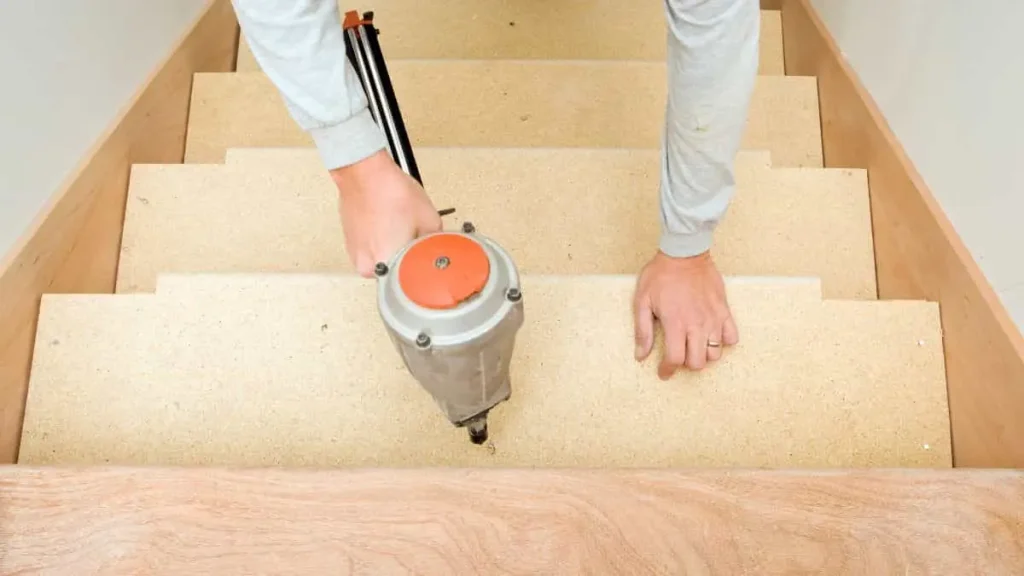
Why is rushing the measurement process a problem?
One of the most common mistakes when replacing stair treads built into stringers is failing to measure accurately. Even slight inaccuracies can result in treads that don’t fit properly within the stringer slots, leading to instability or gaps that compromise the structural integrity of the staircase. It’s important to measure the width, depth, and thickness of the old treads and ensure that the new treads match these dimensions exactly. Rushing through the measuring process or estimating the size can result in costly delays and potential safety hazards down the road.
What happens when you neglect to prep the stringer properly?
Removing old treads can leave behind adhesive residue, nails, or splinters within the stringer slots. Failing to clean and prepare the stringer surface can prevent the new treads from sitting flush or bonding effectively. This mistake often leads to uneven treads that can wobble or shift over time, making the stairs unsafe to use. Always take the time to scrape away old glue, remove nails, and smooth the surfaces where the new treads will sit. Proper preparation ensures a solid, stable fit for the new treads.
Why is overusing or misapplying adhesive a common issue?
While using wood glue to secure treads is an important step in the replacement process, overusing it or applying it incorrectly can create problems. Excess glue can squeeze out from the edges, making cleanup difficult and leaving visible residue that may affect the appearance of the stairs. Moreover, relying too heavily on glue without properly securing the treads with screws or nails can result in a weak bond. It’s crucial to use the right amount of adhesive and complement it with fasteners to ensure the treads stay in place long-term.
What are the risks of poor alignment during installation?
Misalignment of stair treads is another frequent mistake that can lead to both aesthetic and functional issues. If the treads are not perfectly level or aligned with each other, the staircase may feel awkward to use and appear uneven. This problem often occurs when installers fail to double-check the level of each tread as they secure it. To avoid this, consistently use a level throughout the installation process and make adjustments as needed before fastening the treads permanently. Ensuring proper alignment from the start will save time and prevent costly rework later.
Expert Tips for Long-Lasting Results
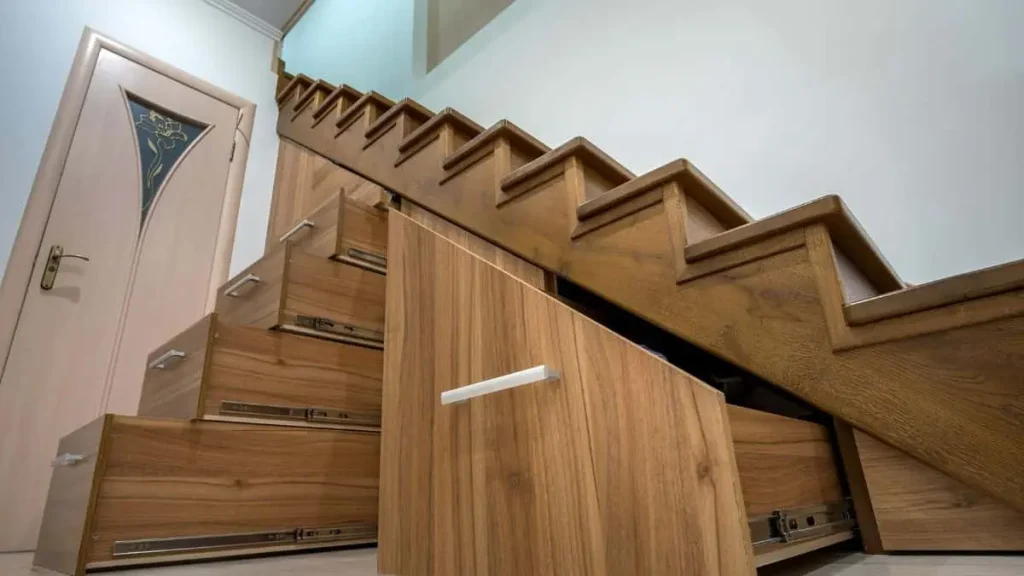
How does selecting the right material impact durability?
Choosing the appropriate material for your stair treads is essential for long-lasting results. Hardwoods such as oak, maple, or walnut are ideal for high-traffic areas because they are resistant to wear and damage. These types of wood can handle daily use without showing significant signs of deterioration, making them a popular choice for stairs. Additionally, consider the finish of the wood; applying a high-quality sealant or protective coating can further enhance the durability of the treads, protecting them from moisture and surface damage over time.
Why should you focus on precision when cutting and fitting treads?
Achieving a snug, precise fit between the stair treads and the stringers is critical to ensure the longevity of your staircase. When the treads fit perfectly into the slots within the stringers, they are less likely to shift or loosen over time. Precision cuts also help distribute the weight evenly across the staircase, reducing the risk of uneven wear or pressure points that could cause damage. Use careful measuring and sanding to achieve a tight fit, avoiding gaps that can compromise both the appearance and stability of the stairs.
How can proper fastening techniques increase the lifespan of the treads?
Securing the treads with the right combination of adhesive and fasteners is key to ensuring they remain in place for years to come. Using screws in addition to wood glue helps create a stronger, more reliable bond between the tread and the stringer. It’s important to drive screws at an angle where they won’t split the wood or weaken the structure of the tread. Additionally, consider countersinking the screws and filling the holes to create a smooth, clean finish that doesn’t detract from the look of the staircase. This approach not only enhances the visual appeal but also prevents the screws from loosening over time.
Why is regular maintenance important for the longevity of stair treads?
Even after a successful installation, regular maintenance is necessary to keep the treads in excellent condition. Dust, dirt, and moisture can accumulate over time, causing the finish to deteriorate and increasing the risk of wear. Cleaning the treads regularly with a damp cloth and avoiding the use of harsh chemicals will help preserve the finish.
In addition, periodically inspecting the stairs for signs of wear, such as cracks or loose fasteners, allows you to address small issues before they become larger, more costly problems. Applying a fresh coat of protective sealant every few years can also extend the life of the treads, ensuring they stay strong and visually appealing for the long term.
How can sealing the treads protect against moisture and wear?
Applying a high-quality sealant or finish is one of the most effective ways to protect your stair treads from moisture and wear. A good sealant acts as a barrier, preventing water from seeping into the wood and causing rot or warping. It also helps protect the treads from scuffs, scratches, and general wear, especially in homes with heavy foot traffic. When selecting a sealant, choose one that is designed for high-traffic areas and offers protection against both water and UV damage if your staircase is exposed to sunlight. Reapplying the sealant every few years ensures that the treads remain well-protected and looking their best.
Conclusion
Replacing stair treads built into stringers is a task that requires careful planning, precision, and attention to detail. By understanding the anatomy of your staircase, using the proper tools and materials, and following safety guidelines, you can successfully restore or upgrade your stairs. Avoiding common mistakes, such as inaccurate measurements or improper alignment, ensures that your project is structurally sound and visually appealing. Additionally, selecting durable materials and using expert installation techniques will help your new treads withstand the test of time.
Whether you’re tackling the project yourself or working with a contractor, following these steps will lead to long-lasting, beautiful results that improve both the function and aesthetics of your home. Maintaining your staircase through regular cleaning and resealing will keep your new treads in top condition for years to come. By taking the time to do the job right, you’ll enhance both the safety and value of your home with a staircase that is built to last.


